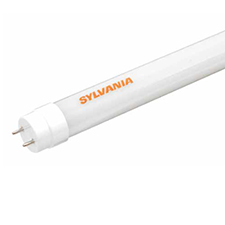
Shedding Some Light on Full-Spectrum LEDs
Chuck Ross
As someone who’s tracked LED lighting since its early days as a commercially available technology, my own experience with the products has evolved. I live in an older house with overhead lighting only in the kitchen and bathrooms, so this has mostly meant experimenting with LED bulbs (or “lamps,” in lighting designer lingo) in the 14 or 15 table fixtures scattered around my home. When the bulbs started falling below $10 or so, each, I began replacing the compact fluorescents (CFLs) I had been using with the new chip-driven alternatives – since all the experts I was interviewing saw LEDs as lighting’s future, I figured I ought to try living with them, myself, to better understand the experience. Plus, I’m just the type of nerd who gets excited by a new kind of light bulb.
I did start to see some savings on my monthly electricity bill, but the difference was modest, given that the existing CFLs were already pretty efficient. A bigger advantage was the instant-on feature – where the CFLs needed a minute or two to hit their final appearance, the digitally driven LEDs hit their marks as soon as I flipped a switch. One downside, though, was that the light from each lamp, especially if they were from different manufacturers, could vary, even if all the Lighting Facts information seemed the same on their packaging.
More recently, I’ve been upgrading again, to smart bulbs I can adjust to be warmer or cooler using a smartphone app. With that adjustability, I can tune the lamps back into visual harmony. And that adjustable color means I can also shift the lighting tone to better support a natural sleep cycle, with cooler, whiter light during the day in winter to warmer, yellower output in the evenings.
Office lighting has gone through a similar evolution. Initially, many facilities managers were just looking to lower their energy costs as they shifted from halogen downlights and tube-style fluorescents to similarly packaged LEDs. Since then, manufacturers have moved on to create products that are more controllable and produce light that comes closer to matching that of natural daylight by incorporating specific phosphors that target the redder end of the lighting spectrum and de-emphasize cooler, bluer wavelengths. Called “full-spectrum” lighting, this new approach offers several potential benefits for commercial building occupants, including:
I did start to see some savings on my monthly electricity bill, but the difference was modest, given that the existing CFLs were already pretty efficient. A bigger advantage was the instant-on feature – where the CFLs needed a minute or two to hit their final appearance, the digitally driven LEDs hit their marks as soon as I flipped a switch. One downside, though, was that the light from each lamp, especially if they were from different manufacturers, could vary, even if all the Lighting Facts information seemed the same on their packaging.
More recently, I’ve been upgrading again, to smart bulbs I can adjust to be warmer or cooler using a smartphone app. With that adjustability, I can tune the lamps back into visual harmony. And that adjustable color means I can also shift the lighting tone to better support a natural sleep cycle, with cooler, whiter light during the day in winter to warmer, yellower output in the evenings.
Office lighting has gone through a similar evolution. Initially, many facilities managers were just looking to lower their energy costs as they shifted from halogen downlights and tube-style fluorescents to similarly packaged LEDs. Since then, manufacturers have moved on to create products that are more controllable and produce light that comes closer to matching that of natural daylight by incorporating specific phosphors that target the redder end of the lighting spectrum and de-emphasize cooler, bluer wavelengths. Called “full-spectrum” lighting, this new approach offers several potential benefits for commercial building occupants, including:
- Better color rendition, which is especially important in retail, design and healthcare settings where accurate color perception is crucial.
- More support for our natural sleep/wake cycles through the ability to simulate daylight’s dynamic changes in light intensity and color temperature.
- Enhanced productivity, as the full-spectrum illumination has been linked to increased concentration and reduced fatigue.
- Improved visual comfort and eye health, resulting from reduced glare and more uniform illumination.
Photo courtesy of Sylvania Lighting



